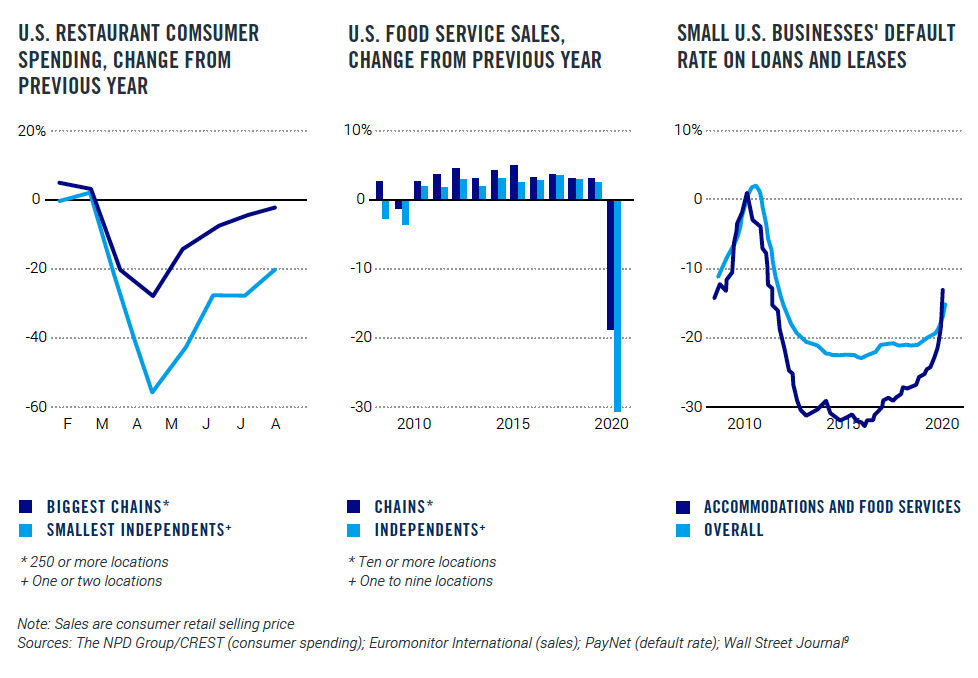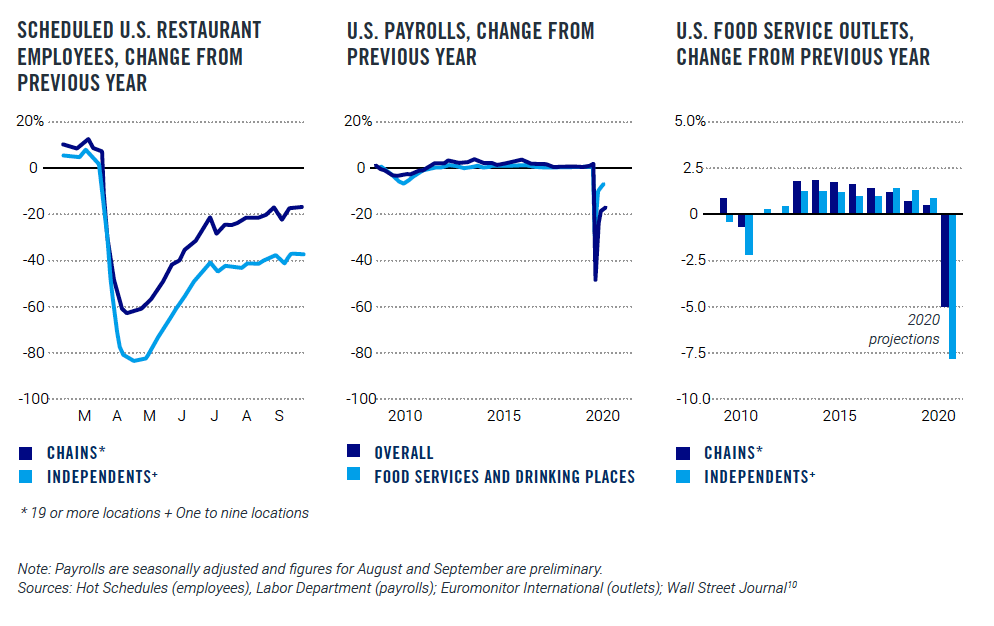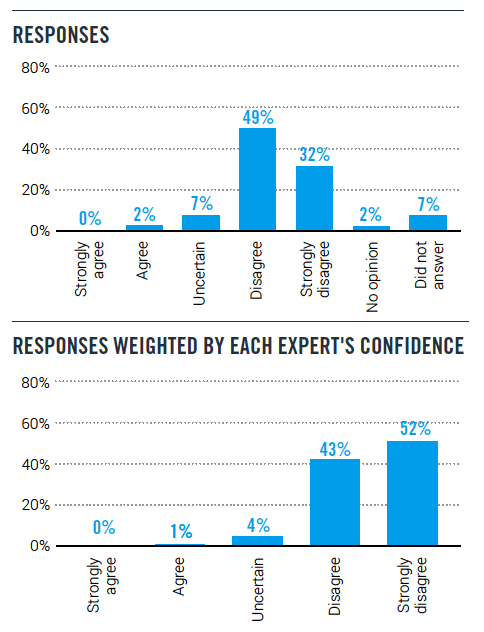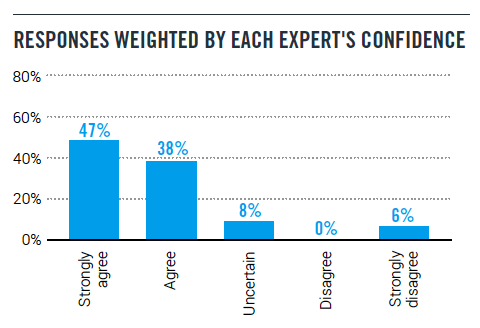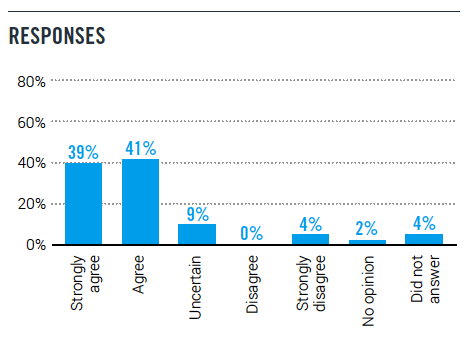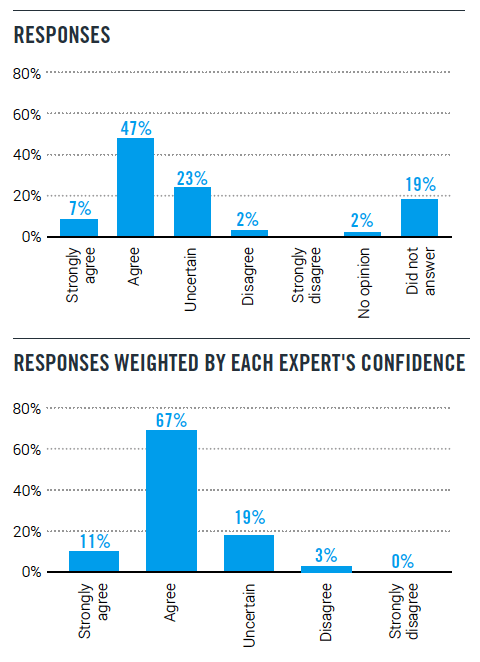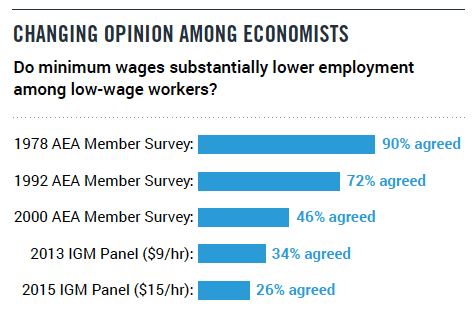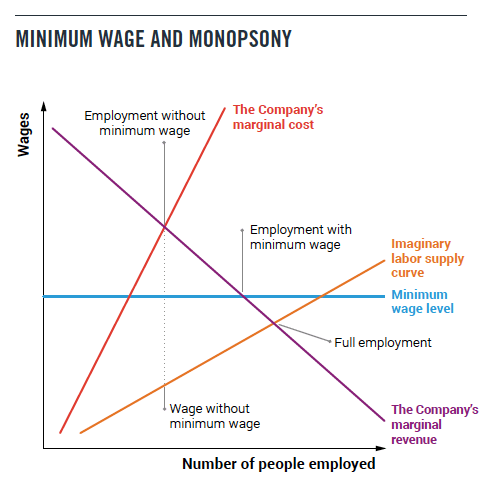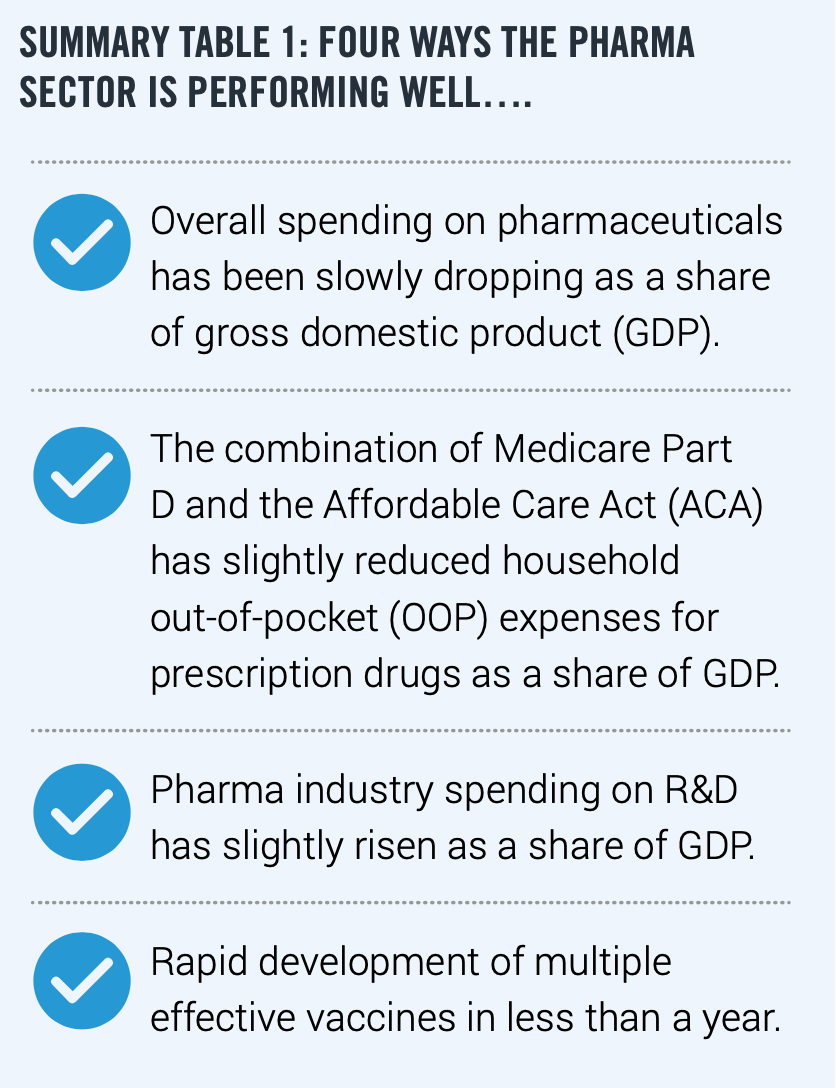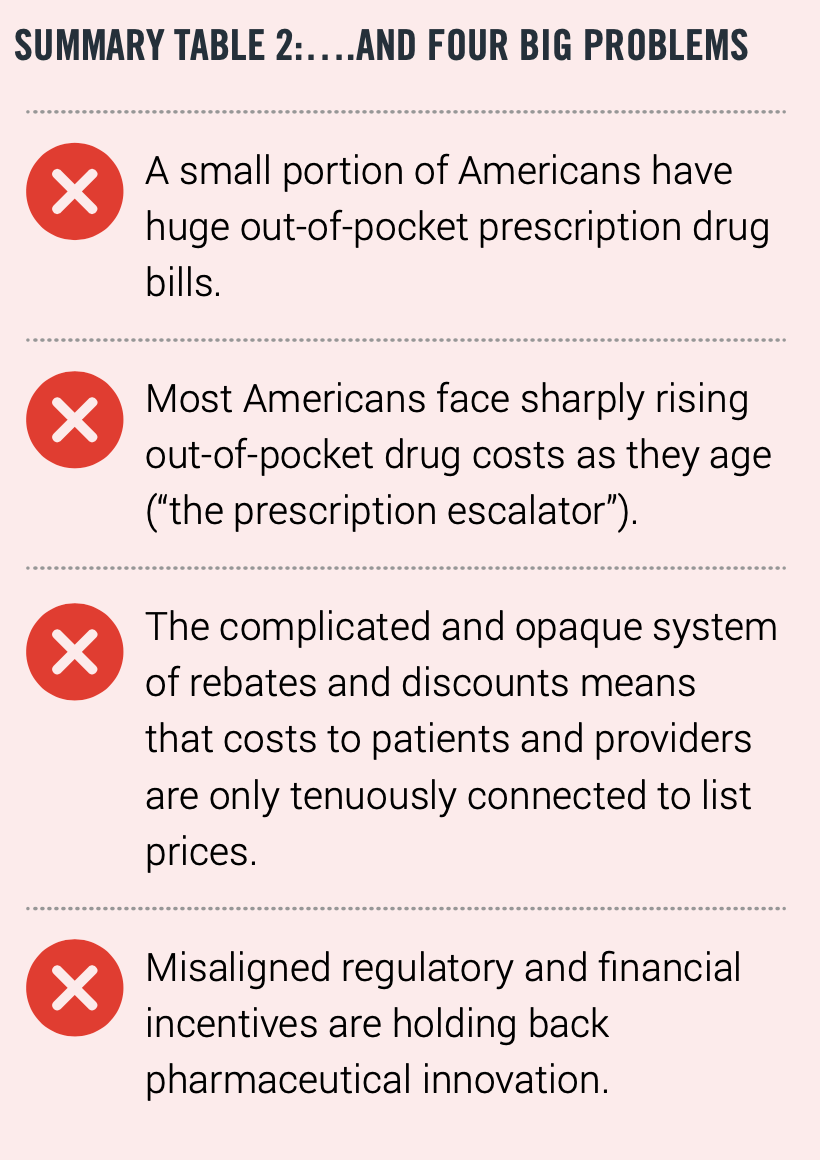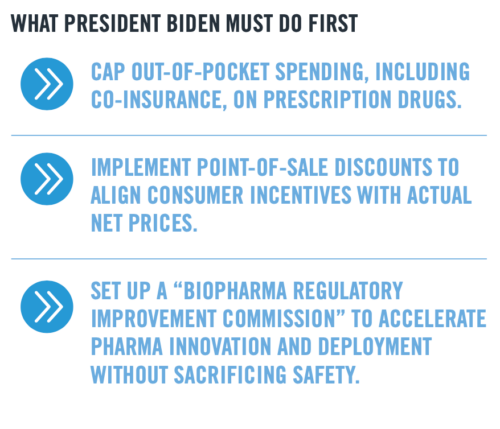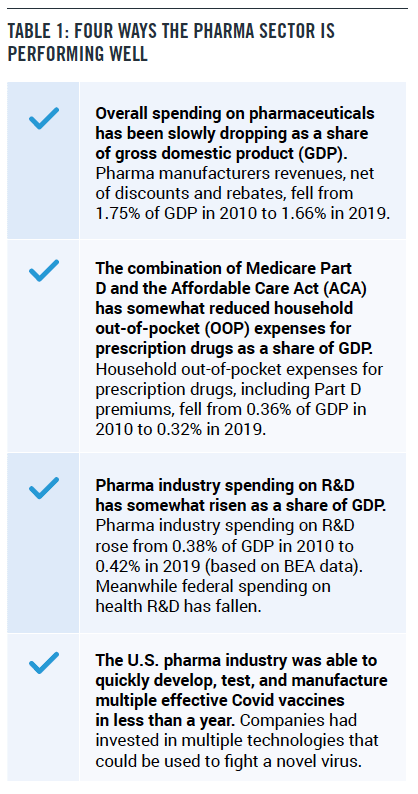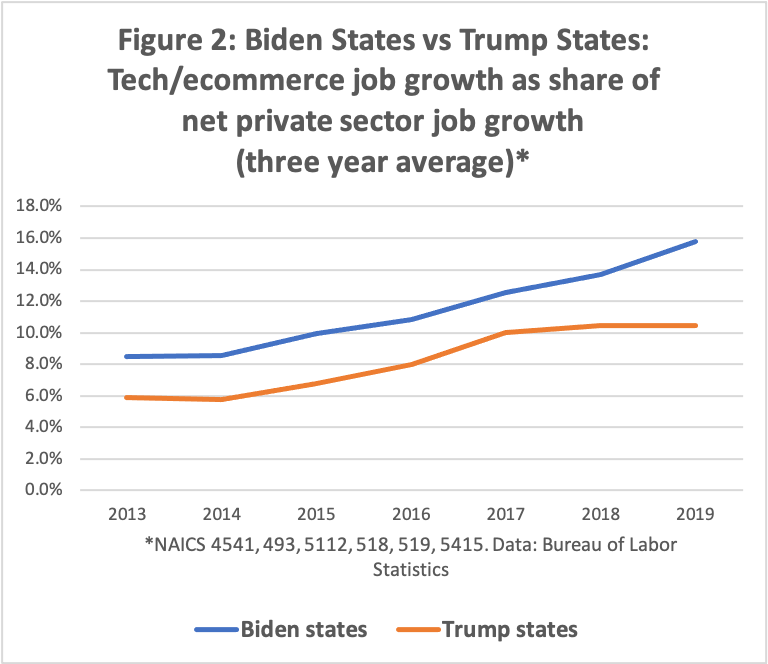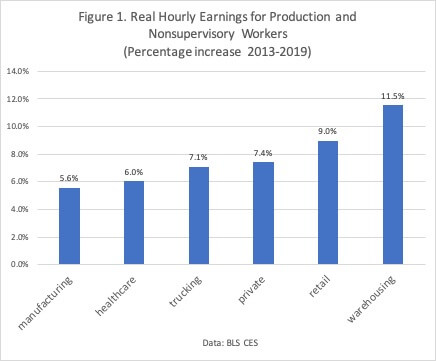The restaurant industry is hurting. Between February and April of last year, more than 6 million food service workers lost their jobs.1 As of December, more than 110,000 restaurants had closed permanently or long-term.2
The industry has some big chains, but most restaurants are quintessentially small businesses. More than 9 in 10 restaurants have fewer than 50 employees. More than 7 in 10 restaurants are single-unit operations.3 Restaurants also offer lots of entry-level jobs for less-skilled workers (almost one-half of workers got their first job experience in a restaurant).
There is almost no safe way to allow indoor dining during an outbreak of a lethal, airborne, and highly contagious virus. Customers must remove their masks to eat and restaurant dining is traditionally done indoors with tightly packed groups of people. Some restaurants have chosen to remain open by relying on pickup and delivery orders instead of indoor dining, and for certain kinds of food, like pizza, this is a natural extension of their previous business model. For others, it’s a difficult transition to figure out pricing and what types of food work for takeaway. Many restaurants rely on third-party services for aggregating online orders and for fulfilling the delivery to customers.
Delivery services have been one of the few sectors expanding during the pandemic, providing work for those who need it and helping many Americans stay safe during the pandemic. With the goal of helping restaurants, some states and cities have temporarily capped the commissions these platforms can charge restaurants for delivery. These price controls are popular with elected officials because they look like a cost-free way to help struggling restaurants, but their costs are hidden, not free, and will hit small restaurants and their workers hardest.
While well-intentioned, imposing price controls will slow the economic recovery in a sector that’s among the hardest hit by COVID. To understand why, it’s important to know how these platforms work. Food delivery services are multi-sided markets, meaning the platform owner is trying to connect multiple “sides” of the market in mutually beneficial exchange. In this case, the business is trying to connect three groups: drivers, restaurants, and consumers. The balance of fees, commissions, and prices on all three sides of this market is set to achieve a high volume of orders, meaning revenue for restaurants and earnings for delivery drivers. Price controls on one side of the market upset this delicate balance.
In general, most economists view price controls as an ineffective and inefficient means of achieving lower costs for underserved groups. In a classic example, rent control leads to underinvestment in construction and maintenance of housing. Landlords are incentivized to convert their apartments into condos or let friends and family live in the units. Under rent control, property owners often charge a large upfront payment to secure a lease. Economists are also skeptical of vaguely written price gouging laws or price controls on essential medical supplies during a public health emergency. A much better solution, many economists argue, is for the government to step in and pay the market rate (to encourage supply) and redistribute the goods based on need.
There is a narrow range of circumstances when price controls can be beneficial for social welfare. In static and monopolistic markets, price controls can make sense to prevent dominant incumbents from charging monopoly prices and harming consumers. A second exception to the rule is during a natural disaster or other emergency. If supply is extremely inelastic (meaning non-responsive to price changes) during a crisis, then price-gouging laws can be beneficial on net. But to be clear, these laws need to be precise and narrow in scope.
If the emergency lasts beyond a few days or weeks, then relaxing price controls might be necessary to encourage an increase in supply.
Neither of these exceptions applies to the food delivery market in this crisis. The market for food delivery services is highly competitive (aggregate profits in the industry are negative4) and the current public health emergency has already lasted for more than a year. Instead, we can expect price controls on food delivery to have the usual negative effect. And based on early data from the cities that have capped commissions, that’s exactly what’s happening.5 Companies are shifting the costs from restaurants to consumers in the form of higher fees, and because consumers are generally more sensitive to price increases, this is leading to a reduction in output in these markets.6 Fewer orders means less business for restaurants and less income for drivers.
There’s a better way forward. The federal government can provide (and has provided) direct bailouts of the businesses and their workers. Unemployed workers have received extended and bonus unemployment benefits. These benefits should be continued for the duration of the public health emergency. Restaurants should receive grants and loans so they can continue paying rent and other fixed costs while closed. These programs should be funded to the level that every restaurant can benefit from them. “Just give people and businesses cash” sounds simple (and expensive), but the alternatives are much worse. Providing no help to restaurants would force them to choose between closing permanently or staying open — thus exacerbating and prolonging the pandemic. Imposing price controls will likely lead to a reduction in output, harming consumers, drivers, and restaurants in the process. The answer is for the federal government to help bridge the gap to the end of the pandemic by continuing and increasing its support for workers and businesses.
INTRODUCTION: RESTAURANTS NEED HELP
The restaurant industry has been hit especially hard by the pandemic. COVID-19 is an airborne respiratory illness that spreads most easily when people are (1) indoors (2) unmasked (3) and close together for an extended period of time. Unfortunately, that description matches restaurants perfectly, which is why many states forced them to close indoor dining during various stages of the pandemic. It’s not the fault of restaurant owners or workers that they were unable to stay open, so policymakers have a duty to make them whole.
More than one in six restaurants have been forced to close permanently — about 110,000 establishments — according to data from the National Restaurant Association.7 Small local restaurants are doing much worse than large chains, which have the advantages of “more capital, more leverage on lease terms, more physical space, more geographic flexibility and prior expertise with drive-throughs, carryout and delivery,” according to the Wall Street Journal.8
Understandably, federal, state, and local governments are trying to support the restaurant industry during this difficult time. The federal government supported restaurant workers with extended and bonus unemployment benefits and it supported businesses through the Paycheck Protection Program (PPP) with $350 billion in April 2020 and $284 billion in December 2020.11 Of course, state and local governments, most of which have balanced budget rules12 (and none of which can print its own currency), are unable to serve as lender or insurer of last resort. Good intentions — the desire to help local restaurants — have unfortunately led some states and cities to adopt a shortsighted and counterproductive policy response: price controls.
San Francisco was one of the first cities to institute a commission cap on meal delivery services, limiting the fees they can charge restaurants to 15 percent.13 Seattle, New York, Washington, D.C., and other cities soon followed suit. As expected, the food delivery apps raised consumer fees in response. DoorDash added a $1.50 “Chicago Fee” to each order after the City Council capped restaurant commissions at 15 percent.14 Uber Eats added a $3 “City of Portland Ordinance” surcharge after the city imposed a 10 percent commission cap.15 In Jersey City, in response to a 10 percent commission cap, Uber Eats added a $3 fee and reduced the delivery range for restaurants.16
To understand why these measures haven’t achieved their stated aims, and why they will likely continue to have unintended consequences, first we need to understand what price controls are and the limited contexts in which they are effective.
WHY PRICE CONTROLS ARE USUALLY BAD
A price control is a government mandate that firms in a given market cannot charge more than a specified maximum price for a good or service (e.g., rent control for apartments) or they cannot charge less than a specified minimum price for a good or service (e.g., minimum wage for labor). Governments usually implement price controls with a noble aim of reducing costs of essential goods (e.g., shelter, fuel, food, etc.) for low-income people or supporting the revenues of a favored industry (e.g., price supports for farmers).
Policymakers tend to justify the imposition of a price control by arguing that the unrestrained forces of supply and demand will not ensure an equitable distribution of resources in essential markets. For politicians seeking to retain their jobs, price controls have the added benefit of being “off-budget,” meaning elected leaders don’t need to raise taxes to pay for them. While the costs of price controls may be unseen from a budgetary perspective, they are certainly not zero. Consumers, workers, and businesses are harmed by the lost output due to shortages under a price ceiling and excessive output under a price floor.
As Fiona Scott Morton, a professor of economics at Yale University, wrote, “If government prevents firms from competing over price, firms will compete on whatever dimensions are open to them.”17 And there are a multitude of dimensions beyond price. In response to price controls during World War II, hamburger meat producers started adding more fat to their burgers. Candy bar companies made their packages smaller and used inferior ingredients. During WWI, consumers who wanted to buy wheat flour at official price often had to buy rye or potato flour too.18
Generally speaking, after rent control takes effect, landlords reduce their maintenance efforts on rent-controlled apartments.19 They also pull rental units from the market and either sell them as condos or let friends and family live in them. Landlords can also capture some of the original economic value of their rental units by adding a fixed upfront payment to rental agreements. When airfare prices were set by the Civil Aeronautics Board between 1938 and 1985, airlines competed on other non-price dimensions, including improving the meal quality and increasing the frequency of flights and the number of empty seats.
The stricter the price controls are, the more likely bribes and other black market activity will substitute for previous white market activity. Even worse, the black market has higher prices than the legal market because sellers need to be compensated for the risk of being caught and punished by the authorities. Queuing and rationing are also extremely common under price controls. Hugh Rockoff, a professor of economics at Rutgers University, explains how price controls on oil had this effect in the 1970s:
Because controls prevent the price system from rationing the available supply, some other mechanism must take its place. A queue, once a familiar sight in the controlled economies of Eastern Europe, is one possibility. When the United States set maximum prices for gasoline in 1973 and 1979, dealers sold gas on a first-come-first-served basis, and drivers had to wait in long lines to buy gasoline, receiving in the process a taste of life in the Soviet Union.20
Henry Bourne, an early twentieth century economist, perhaps summed it up best when describing price controls in France during the French Revolution:21
It was the honest merchant who became the victim of the law. His less scrupulous compeer refused to succumb. The butcher in weighing meats added more scraps than before…other shopkeepers sold second-rate goods at the maximum [price]… The common people complained that they were buying pear juice for wine, the oil of poppies for olive oil, ashes for pepper, and starch for sugar.
Indeed, price controls do not make competitive pressures magically go away; they merely get sublimated into other dimensions of competition — and those who abide by the spirit of the law are punished the most. The aforementioned problems are why economists dislike price controls and favor market-clearing price mechanisms. The Initiative on Global Markets (IGM) regularly surveys a group of leading economists on various questions of public interest. The questions related to different kinds of price controls have been quite lop-sided.
A 2012 survey about rent control asked the following question:22
Local ordinances that limit rent increases for some rental housing units, such as in New York and San Francisco, have had a positive impact over the past three decades on the amount and quality of broadly affordable rental housing in cities that have used them.
And here are the results:
A 2014 survey asked about surge pricing:23
A 2020 survey points to an alternative mechanism for achieving the efficiency benefits of high prices without incurring the distribution costs:
Governments should buy essential medical supplies at what would have been the market price and redistribute according to need rather than ability to pay.
THE EXCEPTIONS WHEN PRICE CONTROLS ARE GOOD
There are two general exceptions when the benefits of price controls might outweigh the costs. First, in markets with natural monopolies and static competition, price controls can prevent dominant incumbents from harming consumers by charging monopoly prices (and restricting output). This is generally how utilities regulation works in the US. Electricity, natural gas, water, and sewage are examples of natural monopolies. It would be highly inefficient to lay two sets of water, gas, or sewage pipes to every house. Similarly, it wouldn’t make sense to have two electrical grids that connect to every house.
There are also low risks to investment efficiency by imposing price controls on these services. We have very likely reached the end of history in terms of innovation in water, sewage, and natural gas. Firms don’t need the incentive
of large monopoly profits to invest in water innovation because it’s just water. The optimal number of competitors in these markets is likely one. Utility regulators work closely with these companies to set prices that allow the firms to recover their fixed costs while earning a reasonable but not extortionate profit.
As Noah Smith, a columnist for Bloomberg, pointed out recently, economists have warmed to one other type of price control over the last few decades: the minimum wage.24
And this shift has occurred for the same reason economists are less worried about price controls in utilities markets: lack of competition. Empirical evidence has started to pile showing significant monopsony power in labor markets, particularly in rural areas.25 As this annotated chart from Noah Smith shows, when a firm has monopsony power in a local labor market, a minimum wage can actually increase employment.
This isn’t the case in all labor markets, of course. Urban markets have much more competition for low wage workers than rural markets. And economists are still worried that a national minimum wage of $15 per hour might lower employment in many states.26 But modest minimum wage increases are a price control that economists feel increasingly comfortable supporting.
The other axis to consider in addition to competition is time. Is the price control permanent or temporary? In the event of natural disasters and public emergencies, price controls (such as price gouging laws) can be reasonable. The normal reason policymakers should allow prices to spike in response to surging demand is to incentivize more supply to enter the market. But in a period of days or a couple of weeks during a disaster, supply may essentially be fixed (due to lack of outside access to the affected market). For very limited periods of time, caps on prices can ensure that a fixed quantity of supply is not allocated merely on willingness to pay (which is often a function of wealth as much as preferences).
PRICE CONTROLS AND MULTI-SIDED PLATFORMS
Before we examine how price controls are likely to affect the food delivery market, let’s first review the basic business models in question here, because they are distinct from traditional markets with only one type of customer. Food delivery apps are operating what are known as multi-sided platforms or markets.
What’s a multi-sided platform?
First it’s important to understand network effects. There are direct network effects and indirect network effects. Direct network eff
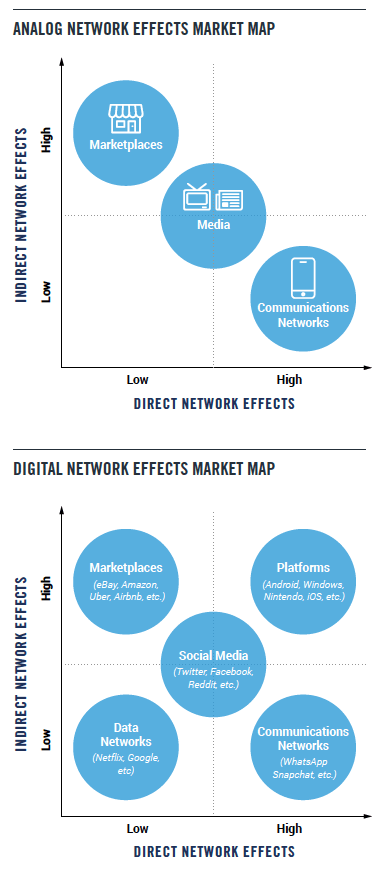 ects are when a product becomes more valuable to an individual user as more total users start using it. The telephone is the classic example. A telephone is only valuable insofar as it can be used to call other people who also own telephones. Indirect network effects are when consumers derive value from a distinct group of users on a platform. For example, consider shopping malls. The shopping mall owner needs to appeal to tenants to ensure the mall has lots of attractive stores for shoppers. But stores only want to sign lease agreements for space in shopping malls with lots of shoppers. The shopping mall owner is in a sense a matchmaker for these two groups. Newspapers and magazines are another example from the analog era. Advertisers want to advertise in publications with a lot of readers and readers want to read engaging content at a low cost. Publishers bring readers and advertisers together in a mutually beneficial exchange.
ects are when a product becomes more valuable to an individual user as more total users start using it. The telephone is the classic example. A telephone is only valuable insofar as it can be used to call other people who also own telephones. Indirect network effects are when consumers derive value from a distinct group of users on a platform. For example, consider shopping malls. The shopping mall owner needs to appeal to tenants to ensure the mall has lots of attractive stores for shoppers. But stores only want to sign lease agreements for space in shopping malls with lots of shoppers. The shopping mall owner is in a sense a matchmaker for these two groups. Newspapers and magazines are another example from the analog era. Advertisers want to advertise in publications with a lot of readers and readers want to read engaging content at a low cost. Publishers bring readers and advertisers together in a mutually beneficial exchange.
Digital markets often have these indirect network effects, too. For example, drivers want to drive on ride-hailing apps with lots of riders and riders want to ride on ride-hailing apps with lots of drivers. It’s Uber and Lyft’s job to set the price schedule (the commission it charges drivers, incentives it offers drivers and riders) at the optimal level. The same is true for operating systems. App developers want to develop apps for platforms with lots of users and users want to use platforms with lots of apps. Ditto for video game consoles: video game developers want to develop games for consoles with lots of gamers; gamers want to buy consoles with lots of games. The charts to the right show which products and services have direct network effects, indirect network effects, or both.
One of the most important questions for the owner of a multi-sided platform is how to set the prices on each side of the market. Economic research shows that the platform owner should charge lower prices to the side of the market that has relatively elastic demand (meaning consumers are sensitive to price changes and will change their quantity demanded sharply) and higher prices to the side of the market that has relatively inelastic demand.27 The most elastic side should pay the lowest price, and often it makes sense to charge them below-cost prices (“free shipping” or “free delivery”). That’s the “subsidy” side of the platform. The side with the lower elasticity of demand is the “money” side. Generally speaking, consumers have a higher elasticity of demand and suppliers (e.g., drivers, merchants, developers, hosts, etc.) have a lower elasticity of demand.
What are the likely effects of a price control on a multi-sided platform?
Research from Rob Seamans and Feng Zhu studied how Craigslist’s entry into various local markets affected the classified ads business of local publishers.28 Remember, newspapers are also operating multi-sided markets. They need to attract a large number of readers so they can then attract a large number of advertisers. Most classified ads on Craigslist are free, so its market entry represented a marked increase in competition on one side of the publisher’s market. For publishers, this leads to “a decrease of 20.7 percent in classified-ad rates, an increase of 3.3 percent in subscription prices, a decrease of 4.4 percent in circulation, an increase of 16.5 percent in differentiation, and a decrease of 3.1 percent in display-ad rates.” The authors go on to show that “these affected newspapers are less likely to make their content available online.” Changes on one side of a multi-sided market ripple throughout the other sides.
While the research literature on multi-sided platforms offers some insight about what might happen in the event of a price control on one side of food delivery platforms, we can also just look at real world evidence to see what’s happening. According to a recent article in Protocol:
On May 7, Jersey City capped delivery app fees charged to restaurants at 10%, instead of the typical 15% to 30% many such platforms take. The next day, Uber Eats added a $3 delivery fee to local orders for customers and reduced the delivery radius of Jersey City’s restaurants.
Now, fewer people are ordering from the restaurants via Uber Eats and instead are shifting to other platforms, the company and the town’s mayor both confirmed to Protocol.29
When cities or states impose a price control on the commissions delivery apps can charge restaurants, they are unknowingly destroying the delicate balance platform owners have struck to attract enough consumers and suppliers on the platform to make the economics work. In cases where the government hasn’t capped commissions and fees across all sides of the platform, the first step for the app owner is to raise fees on consumers to make up for the lost revenue from the restaurant. But as mentioned earlier, the consumer side has a higher elasticity of demand than the restaurant side, so an equivalent price increase will disproportionately decrease demand on that side of the market.
Poorly designed price controls can also have a disparate impact on different business models in the same market. In the food delivery business, for example, there are two common business models with starkly different cost structures. Some companies merely aggregate online orders and leave the restaurant to handle final delivery on its own. The commissions for these services tend to be 15 percent or lower because the costs are much lower than full delivery services. Other services are full stack — they handle the transaction from the beginning of the order until it’s been delivered to the customer. These services charge higher commission rates (up to 30 percent) because paying drivers for their time and expenses is much more costly than merely aggregating online orders. Naive commission caps favor the aggregators over the full stack delivery service providers because the cap is usually non-binding on the low-cost business model. But that low-cost business model is also less innovative. Full-service delivery platforms are reducing transaction costs low enough to bring an entire new category of restaurants into the delivery market.
Price controls would also disproportionately hurt small restaurants. Large chains like McDonald’s negotiate commission rates as low as 15 percent with delivery platforms because they can offer a high, steady volume of orders as well as their own large marketing budgets.30 Smaller restaurants are riskier partners and therefore pay higher commission rates — meaning price controls would disproportionately impact small restaurants. Commission caps might also lead to more vertical integration between restaurant chains and delivery services. Some large chains like Domino’s Pizza already employ their own delivery drivers.31 If enough cities and states implement price controls on third party delivery services, then more chains with high order volumes might decide to bring delivery services in-house to avoid the caps (because there are no commissions in a vertically integrated company).
So, what is the likely effect of these commission caps? Higher consumer fees. Longer wait times. Lower quality service. Reduced restaurant and delivery zone coverage. A switch from full service delivery apps to aggregators. And an increased incentive for the largest restaurant chains to vertically integrate with delivery services.
Lastly, it’s important to note that neither of the two exceptions for the general rule against price controls hold in this case. First, food delivery service markets are highly competitive.32 Most of the companies in this market haven’t been able to reliably turn a profit yet. As Eric Fruits, the chief economist at the International Center for Law and Economics, noted,
Much attention is paid to the ‘Big Four’ — DoorDash, Grubhub, Uber Eats, and Postmates. But, these platform delivery services are part of the larger foodservice delivery market, of which platforms account for about half of the industry’s revenues. Pizza accounts for the largest share of restaurant-to-consumer delivery.33
He goes on to point out that restaurants can also always offer their own delivery service, which serves as a check on the market power of third-party food delivery apps. And restaurants also have the option of apps like ChowNow, Tock, and Olo that offer online ordering as well at substantially lower commissions, largely because they do not offer delivery.
Second, the pandemic is a chronic rather than acute public health emergency. It is now entering its second year and we are still months away from readily available vaccinations for all groups. Price controls would reduce supply at a time when people desperately need delivery services to maintain social distancing.
CONCLUSION: A BETTER WAY FORWARD
While bailouts are never uncontroversial, bailing out the restaurant industry is an easy call. There is no moral hazard risk as there was with the bank bailouts in 2008, when it was reasonable to worry that bailed out financial firms would increase their risky behavior in the future knowing that they would be bailed out in the event of a crisis. In this case, restaurants won’t change their behavior in the future in a way that increases the odds of a deadly pandemic.
A viral pandemic is a perfect example of an exogenous shock — an Act of God (or “force majeure” as insurance contracts put it). By definition, the pandemic affects everyone. Private insurance markets don’t work for pandemics as well as they do for fires or natural disasters because a pandemic occurs everywhere all at once. The private insurance provider would be forced to pay out to all its insured entities simultaneously. Normally,
a majority of an insurer’s clients would be unaffected by an event and their premiums would be used to finance payouts for those harmed. In the case of a pandemic, everyone is harmed.
The federal government is the appropriate entity for collectively insuring the population against these kinds of macro-level risks. Using its fiscal and monetary capacity, the government can efficiently insure the entire population across time. Fiscal support comes in the form of deficit-financed spending (we’re effectively borrowing from our future, richer selves) and monetary support comes in the form of lower interest rates and guaranteed loans for businesses and state and local governments.
Deficit spending will need to be paid for in the future, either via inflation or taxes. But deficit-spending during a crisis is consistent with welfare-enhancing public policy. Income has diminishing marginal returns. In a time of crisis, we want to be able to borrow against our collective future income, which is exactly what deficit spending allows us to do. Just give people money — don’t mess with prices.



